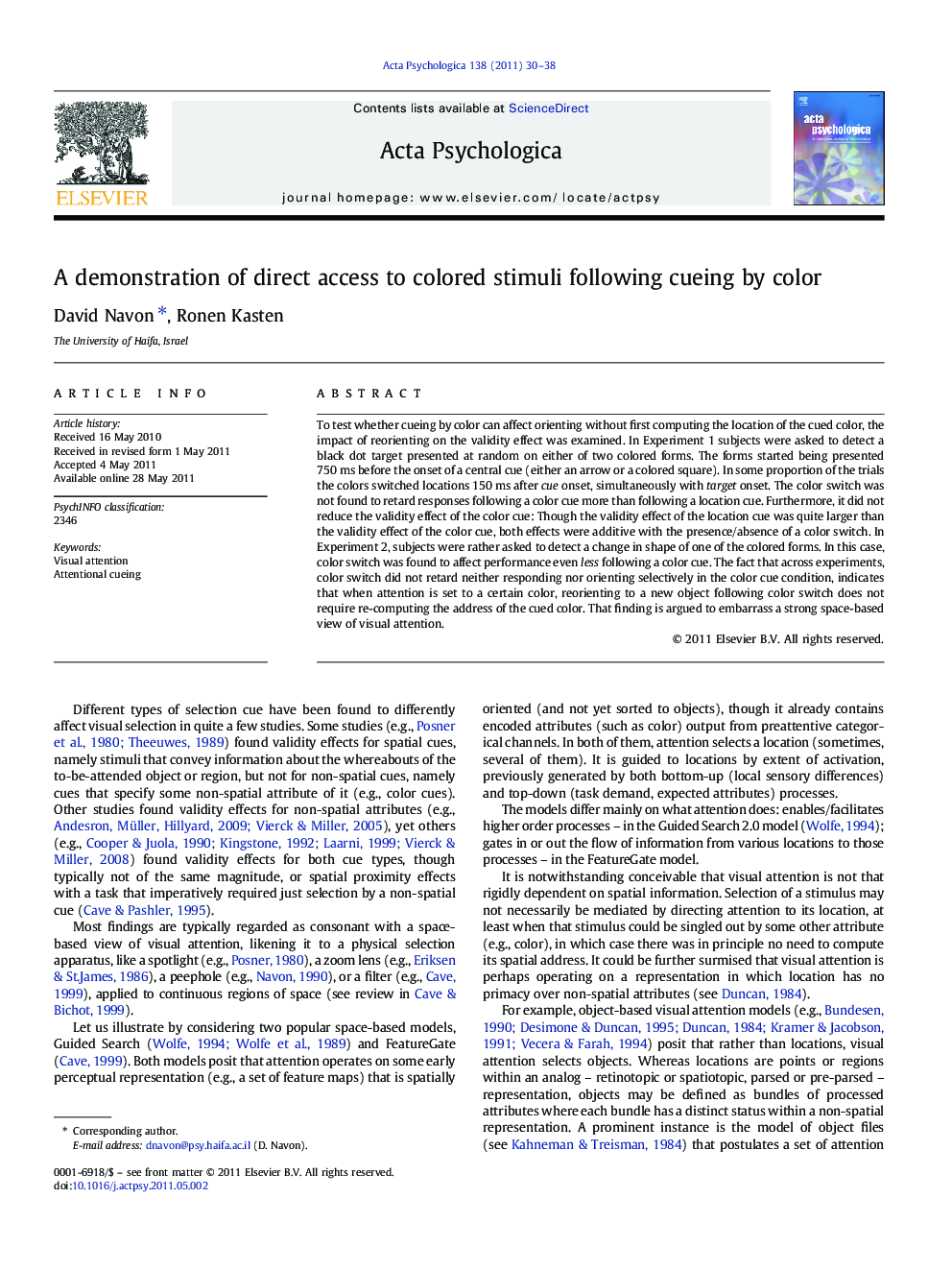| Article ID | Journal | Published Year | Pages | File Type |
|---|---|---|---|---|
| 920167 | Acta Psychologica | 2011 | 9 Pages |
To test whether cueing by color can affect orienting without first computing the location of the cued color, the impact of reorienting on the validity effect was examined. In Experiment 1 subjects were asked to detect a black dot target presented at random on either of two colored forms. The forms started being presented 750 ms before the onset of a central cue (either an arrow or a colored square). In some proportion of the trials the colors switched locations 150 ms after cue onset, simultaneously with target onset. The color switch was not found to retard responses following a color cue more than following a location cue. Furthermore, it did not reduce the validity effect of the color cue: Though the validity effect of the location cue was quite larger than the validity effect of the color cue, both effects were additive with the presence/absence of a color switch. In Experiment 2, subjects were rather asked to detect a change in shape of one of the colored forms. In this case, color switch was found to affect performance even less following a color cue. The fact that across experiments, color switch did not retard neither responding nor orienting selectively in the color cue condition, indicates that when attention is set to a certain color, reorienting to a new object following color switch does not require re-computing the address of the cued color. That finding is argued to embarrass a strong space-based view of visual attention.
Research highlights► Color switch of target objects did not retard responses following a color cue more than following a location cue. ► Hence, reorienting to a new object following color switch does not require re-computing the address of the cued color. ► That finding is argued to embarrass a strong space-based view of visual attention.
